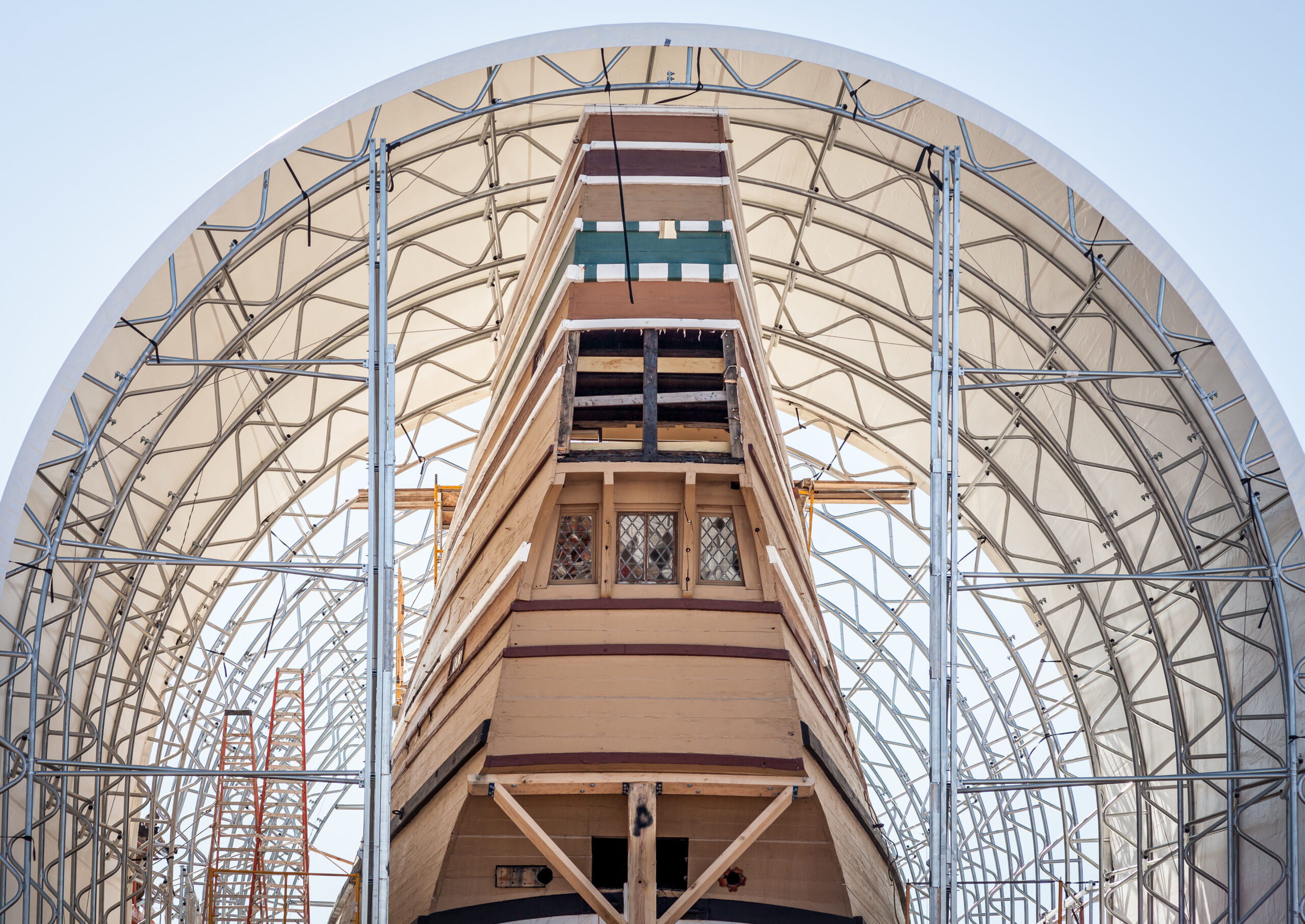
If one wants to see a lot of huge logs being sawn, shaped, and converted into futtocks, floors and other structural parts of a ship, then a stop at Mystic Seaport this summer is a must.
The restoration of Mayflower II is in full swing in the Henry B. duPont Preservation Shipyard. The ship belongs to Plimoth Plantation, of Plymouth, MA, and is being restored in preparation for celebrations commemorating the 400th anniversary of the Pilgrims’ arrival in 1620. The project is a collaboration between the two museums with Plimoth staff members working alongside Mystic Seaport staff.
Over the course of the winter, a steel frame was installed to help support the hull as parts are removed and replaced, and a temporary fabric structure, nicknamed “the Mailbox,” was erected over the ship to protect her from the elements and enable the shipwrights to work in all weather.
“The focus of the work for the next nine months or so will be on the ship’s frames, floor timbers, and the keelson,” said Quentin Snediker, the Shipyard director and Clark Senior Curator for Watercraft. “We also have a crew at work replacing the stem assembly, which is five very large pieces that, despite their size, need to be precisely shaped and fitted together.”
One can observe the basic process upon entering the Shipyard. There are two sawmills slicing the large logs down to a manageable size with flat surfaces. Once a shipwright selects a piece of wood for a particular part, it moves onto the yard’s large shipsaw to be cut to a rough outline of the final shape. (A shipsaw is basically a very large bandsaw, except that instead of the saw table moving to adjust the angle of the cut on a bandsaw, the entire saw moves around the table on a shipsaw.) A thin wood template of the old part typically assists in both the selection of wood and outlining the cuts.
Once the rough cut is complete, hand tools take over. A shipwright may use a chainsaw, power planer, adze, broad ax, and a slick (an oversized chisel) to bring the timber into shape. Live oak is predominately what is being used at this time. The qualities that make live oak prized for shipbuilding — strength and density, curved grain, and rot-resistance — also make it somewhat hard to work with compared to other woods.
The final step is to move the part onto the ship for a final fitting and fastening into place. As was the case with the whaleship Charles W. Morgan during her restoration, black locus trunnels (treenails) and galvanized metal spikes are being used as fasteners.
This activity will be taking place all summer and into the fall. While visitors are not able to board Mayflower II, they can watch the activity in the Shipyard and view both the bow and stern from viewing areas at each end of the shelter.



